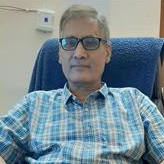Laser processing in polymer research
A special issue of Polymers (ISSN 2073-4360). This special issue belongs to the section "Polymer Processing and Engineering".
Deadline for manuscript submissions: closed (21 January 2019) | Viewed by 52536
Special Issue Editors
Interests: pulsed laser deposition; novel laser fabrication of thin films; coatings of advanced materials; matrix assisted pulsed laser evaporation; metallic nanoparticle fabrication; bionanotechnology; thin films and nanotechnology; mechanical behavior of materials; material characterization
Special Issues, Collections and Topics in MDPI journals
Interests: organotrialkoxysilane and organo-amine functionalized metal nanoparticles; electrochemical sensors; organically modified silicate; self-assembling nanofluid; electrocatalysis; mediated bioelectrochemistry; metal ceramics hybrid; nanoparticle-siloxane nanofluid; polymer-nanoparticles nanofluid
Special Issues, Collections and Topics in MDPI journals
Interests: materials science and engineering; laser–material interactions; thin films and coatings; laser processing; matrix assisted pulsed laser evaporation (MAPLE); MAPLE direct write; functional biomaterials (biopolymers, proteins, biomembranes, nanoparticles, flavonoids, stem cells); controlled and targeted drug delivery; regenerative medicine; tissue engineering; biofouling; chem-bio-sensors; nanotechnology and bionanomedicine; biotechnology applied microbiology; biomedical engineering
Interests: laser-based fabrication of medical devices; nanostructured biomaterials; drug delivery; laser processing of nanostructured and microstructured biomaterials
Special Issues, Collections and Topics in MDPI journals
Special Issue Information
Dear Colleagues,
Maiman demonstrated light amplification using stimulated emission of radiation over fifty years ago. Lasers are being utilized in many applications in clinical medicine; for example, laser-based minimally-invasive surgical techniques are associated with little blood loss and precise removal of tissue. In addition, researchers have demonstrated and commercialized the use of lasers for processing biomedical materials. For example, pulsed laser deposition, laser micromachining, selective laser sintering, selective laser melting, and stereolithography have been used for processing biomaterials. A variety of devices, including cardiovascular stents, biosensors, drug delivery devices, and scaffolds for tissue engineering have been created using laser-based processes. This Special Issue will consider current developments in this interdisciplinary area.
Potential topics could include, but are not limited to:
- Laser texturing and patterning of polymers and/or polymer composites
- Laser deposition of polymer-based composite thin films and coatings
- Rapid prototyping/transfer/printing of polymers and/or polymer composites assisted by laser
- Laser micro- and nanofabrication of polymers and/or polymer composites
- Evaluation, performance, and applications of laser-processed polymers/polymer composites in nanotechnology, biomedicine, green chemistry, electronics, sensing, catalysis, etc.
-Modeling of laser processing of polymers
-Laser fabrication of 3D polymer constructs, microstructures, etc.
-Nanoparticle-mediated laser polymerization
Prof. Douglas B. Chrisey
Prof. Roger Narayan
Prof. Prem C. Pandey
Dr. Rodica Cristescu
Guest Editors
Manuscript Submission Information
Manuscripts should be submitted online at www.mdpi.com by registering and logging in to this website. Once you are registered, click here to go to the submission form. Manuscripts can be submitted until the deadline. All submissions that pass pre-check are peer-reviewed. Accepted papers will be published continuously in the journal (as soon as accepted) and will be listed together on the special issue website. Research articles, review articles as well as short communications are invited. For planned papers, a title and short abstract (about 250 words) can be sent to the Editorial Office for assessment.
Submitted manuscripts should not have been published previously, nor be under consideration for publication elsewhere (except conference proceedings papers). All manuscripts are thoroughly refereed through a single-blind peer-review process. A guide for authors and other relevant information for submission of manuscripts is available on the Instructions for Authors page. Polymers is an international peer-reviewed open access semimonthly journal published by MDPI.
Please visit the Instructions for Authors page before submitting a manuscript. The Article Processing Charge (APC) for publication in this open access journal is 2700 CHF (Swiss Francs). Submitted papers should be well formatted and use good English. Authors may use MDPI's English editing service prior to publication or during author revisions.
Keywords
- Laser
- Polymer composites
- Polymer-based materials
- Scaffolds
- Surface Modification
Benefits of Publishing in a Special Issue
- Ease of navigation: Grouping papers by topic helps scholars navigate broad scope journals more efficiently.
- Greater discoverability: Special Issues support the reach and impact of scientific research. Articles in Special Issues are more discoverable and cited more frequently.
- Expansion of research network: Special Issues facilitate connections among authors, fostering scientific collaborations.
- External promotion: Articles in Special Issues are often promoted through the journal's social media, increasing their visibility.
- Reprint: MDPI Books provides the opportunity to republish successful Special Issues in book format, both online and in print.
Further information on MDPI's Special Issue policies can be found here.









